Protesters have continued to pour onto the streets of Washington, D.C., night after night, despite the city’s attempt to suppress protest through the deployment of the National Guard and the imposition of nightly curfews.
The righteous rage and pain felt in response to the murder of George Floyd by Minneapolis police officer Derek Chauvin is palpable throughout the streets of this city, as many Black, Indigenous and Latinx people are already dying at large numbers from the lack of resources to fight the COVID-19 pandemic and the everyday forms of systematic abuse and slaughter.
In response to the growing protests, D.C. Mayor Muriel Bowser activated the National Guard and set curfews beginning on Saturday which extended through Wednesday. Police Chief Peter Newsham has said that those who break curfew will be arrested through the use of the city’s CCTV system, even going so far as to ask business owners to turn over their camera footage and offering rewards for information that leads to arrests. These acts stifle the right to peaceful protest and could turn people against one another while the U.S. is in the midst of the worst economic crisis since the Great Depression.
On Monday, Trump referred to those peacefully protesting as “rioters” and “criminals” and threatened to activate the military. The D.C. and federal government’s violent overreaction to protests has included the use of multiple law enforcement agencies and the military. On Monday night, at the U Street District in Northwest Washington, D.C., I witnessed protesters repeatedly being greatly outnumbered by police and being tear gassed, shot at and terrorized throughout the night. A small group of approximately 15-20 people kneeled and sat on a small neighborhood street in the U District and were quickly swarmed by at least 50 Metropolitan Police Department officers. A bus full of military police were brought in, but then left.
The scene on Tuesday night was different, however: It appears that the curfews have only further enraged D.C. residents rather than persuading them. On Tuesday night, as I moved through Lafayette Square and surrounding areas, I witnessed protesters greatly outnumbering law enforcement as they peacefully demonstrated and marched late into the night, demanding change to the racist system that has been killing many since the creation of the U.S. This photo essay offers a glimpse of both the protest energy and the police presence over the past few days.
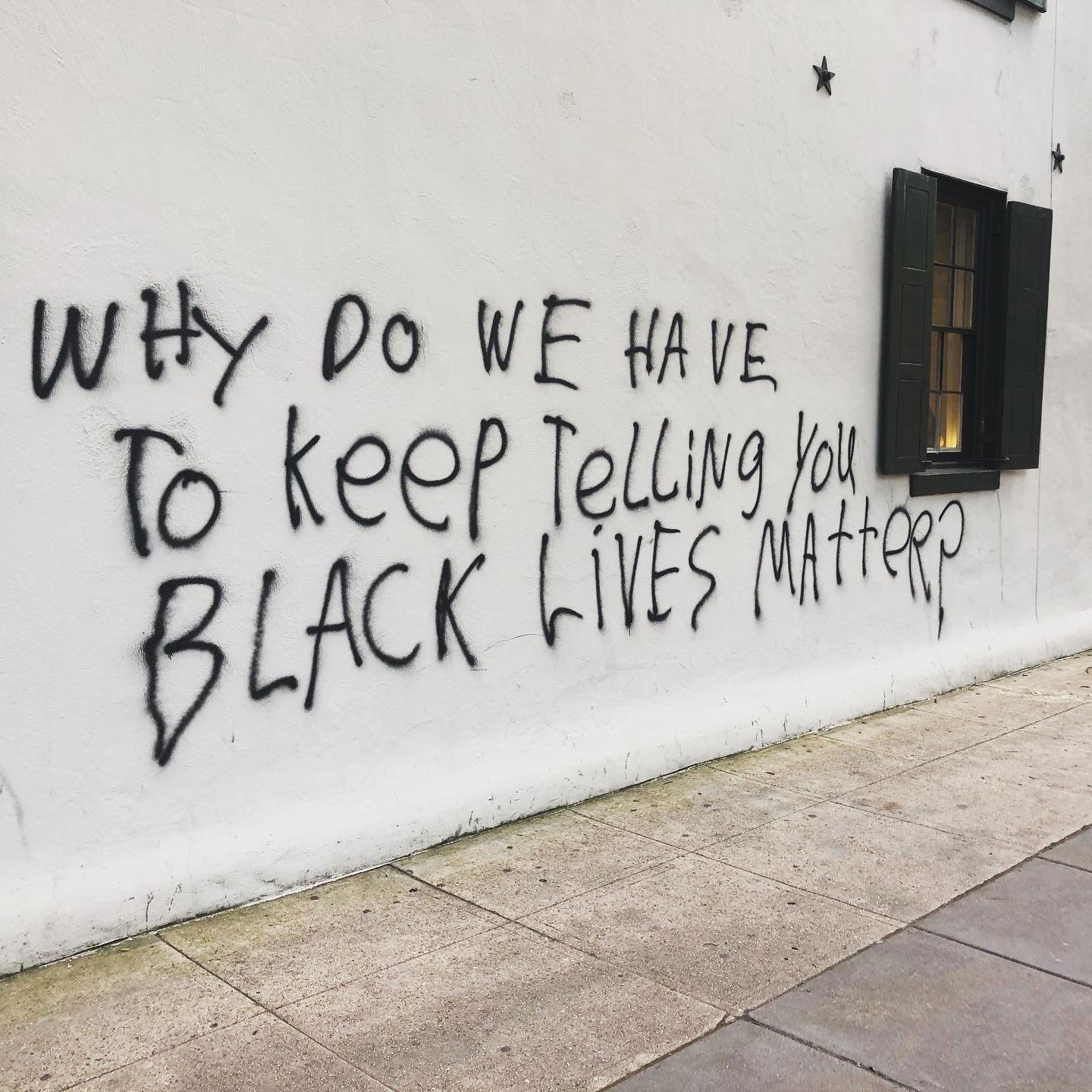
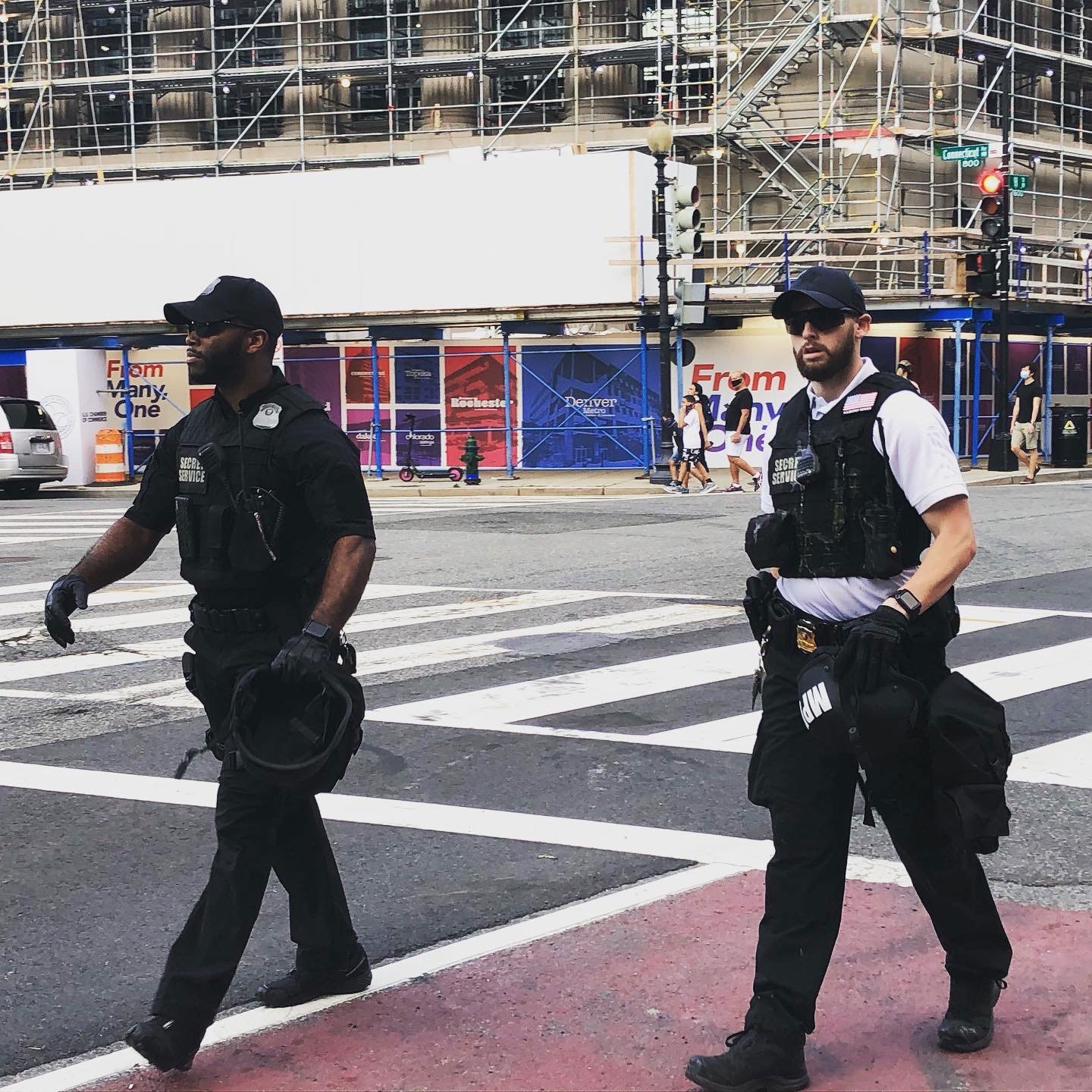
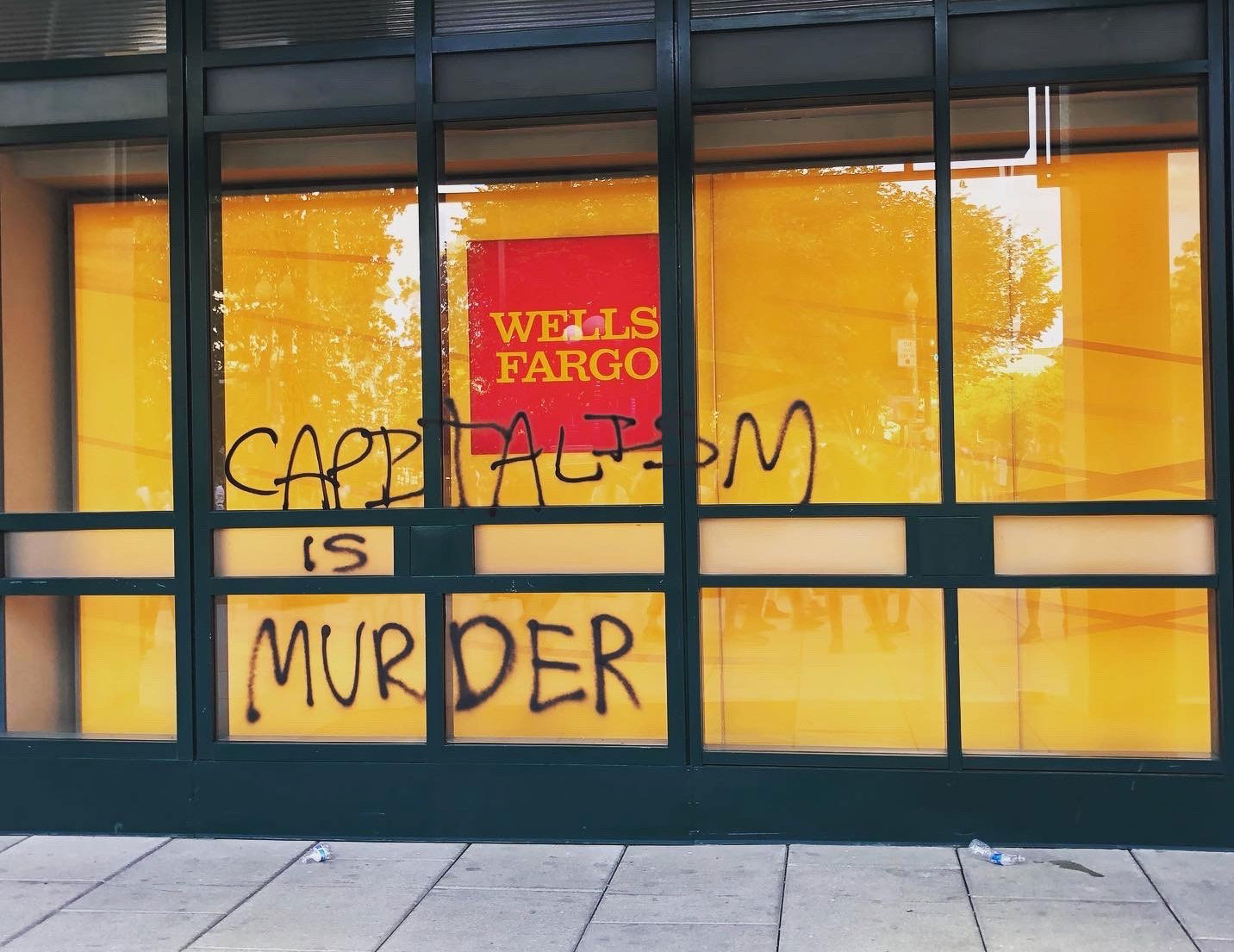
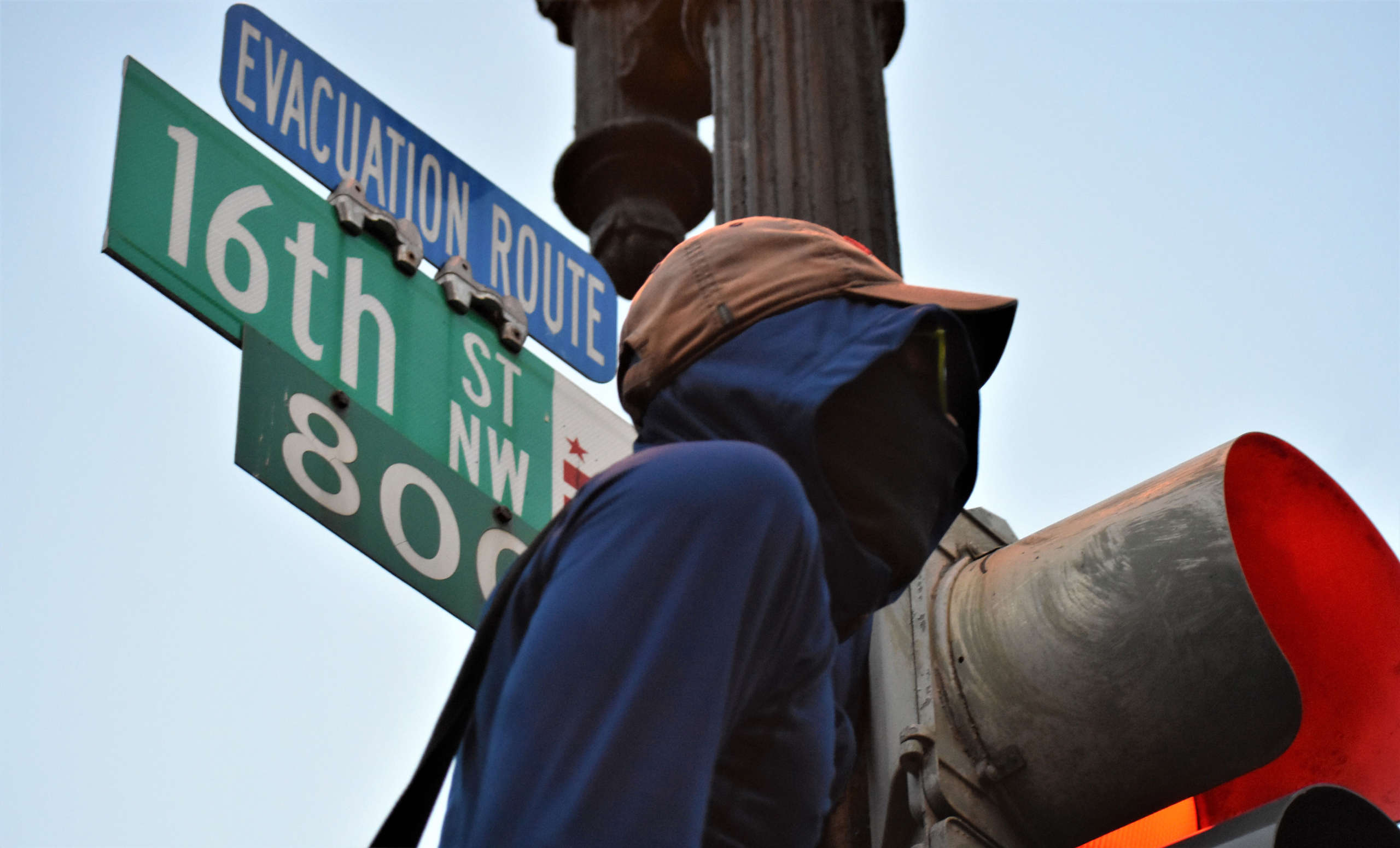
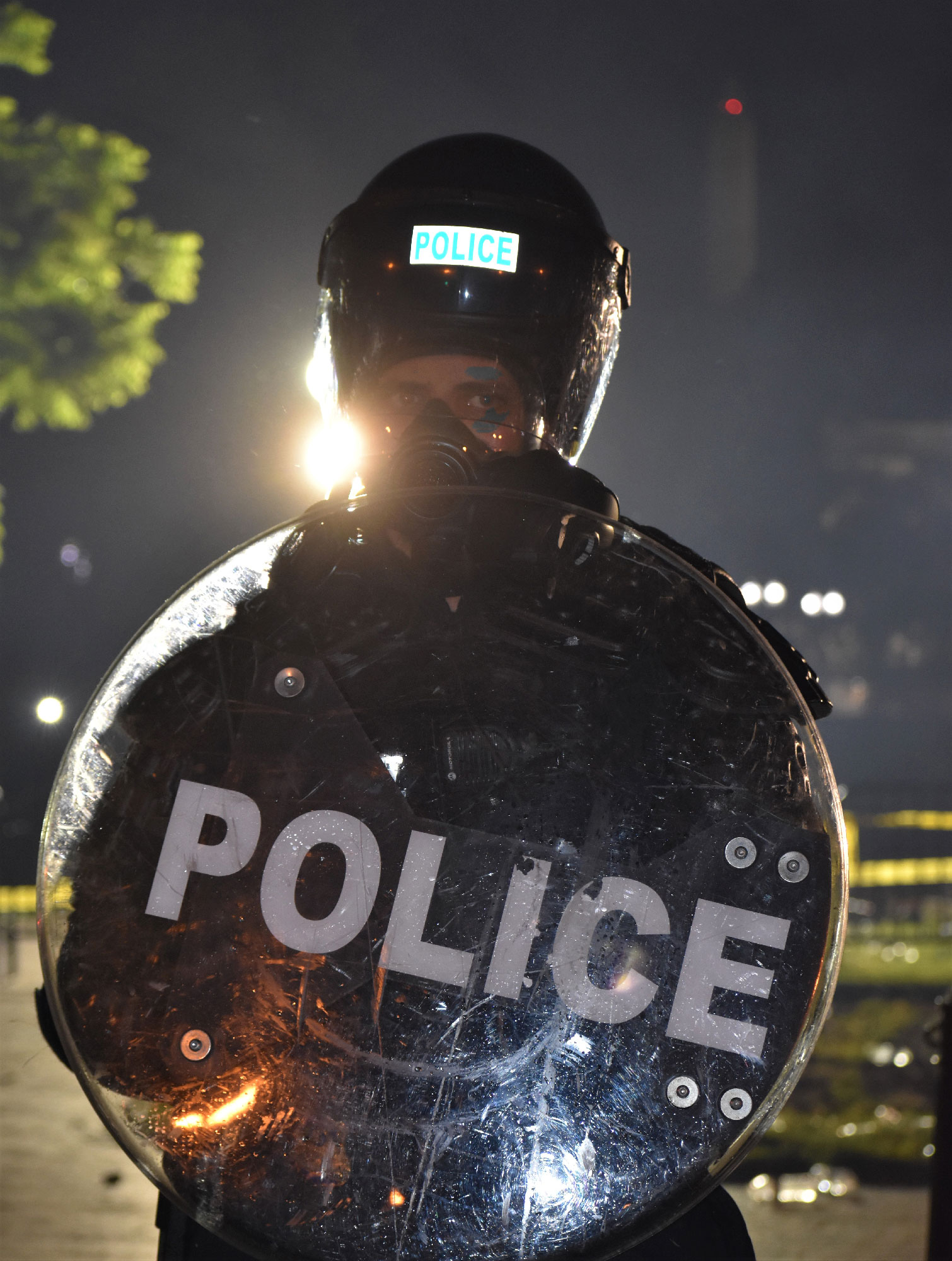
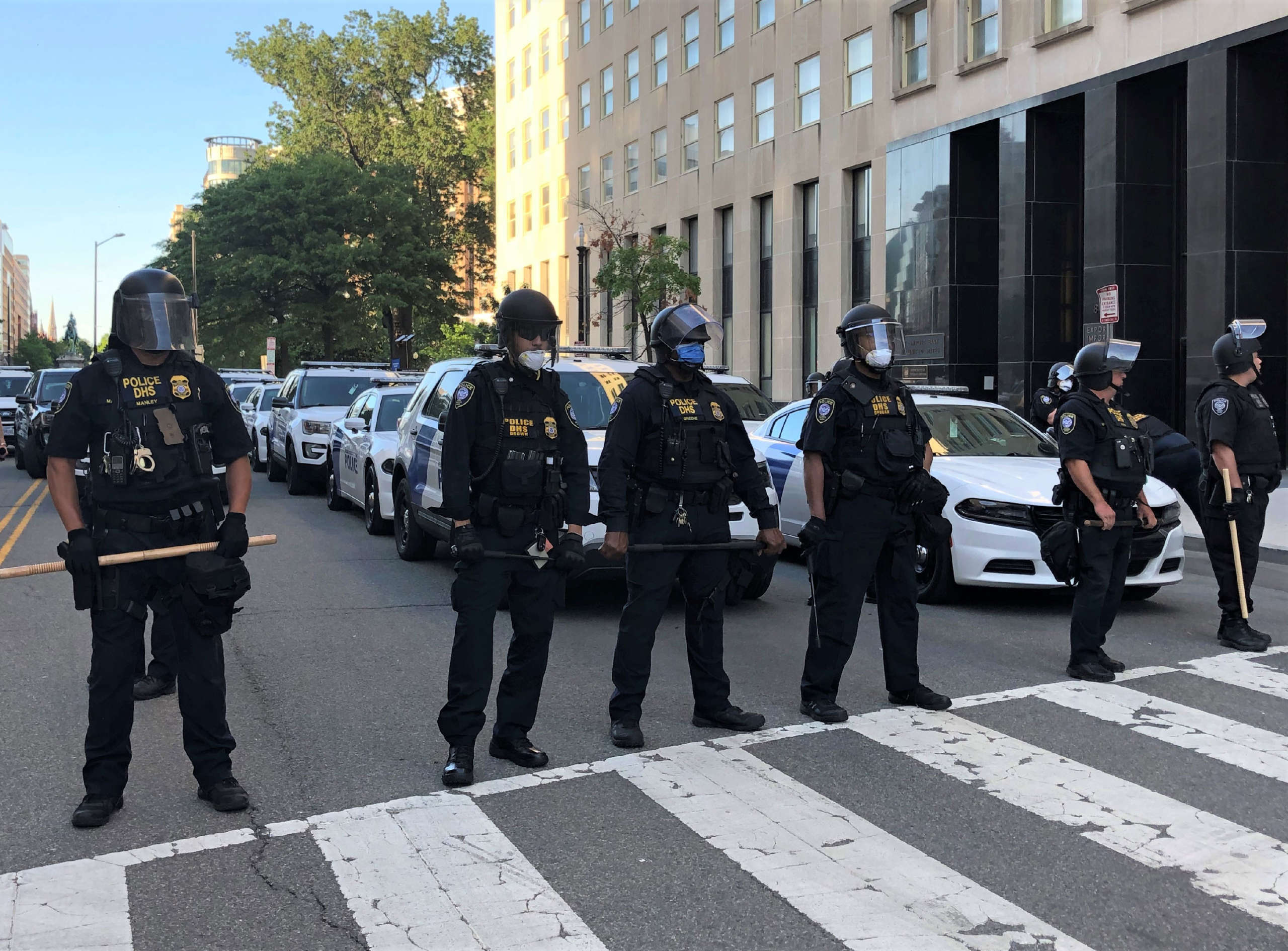
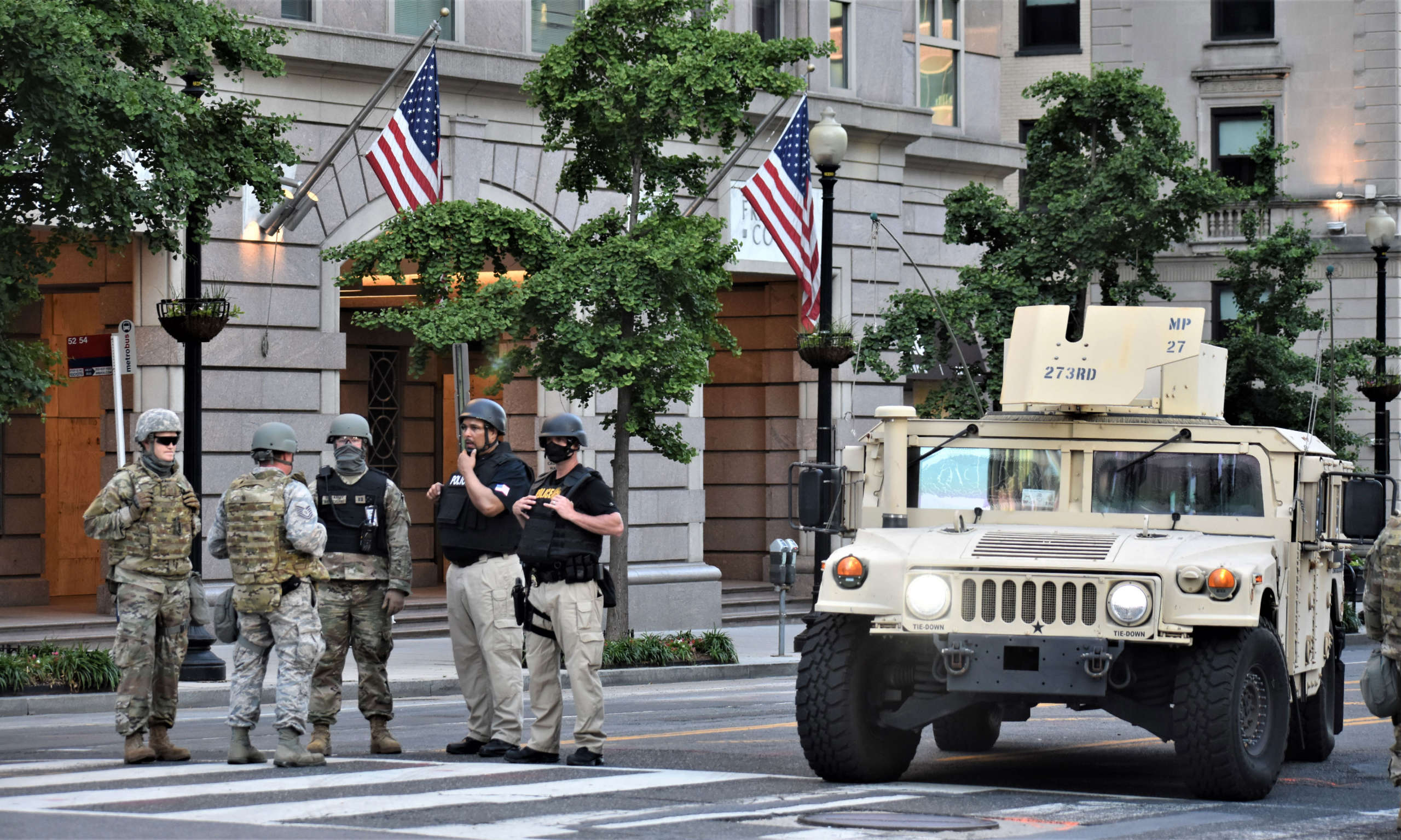
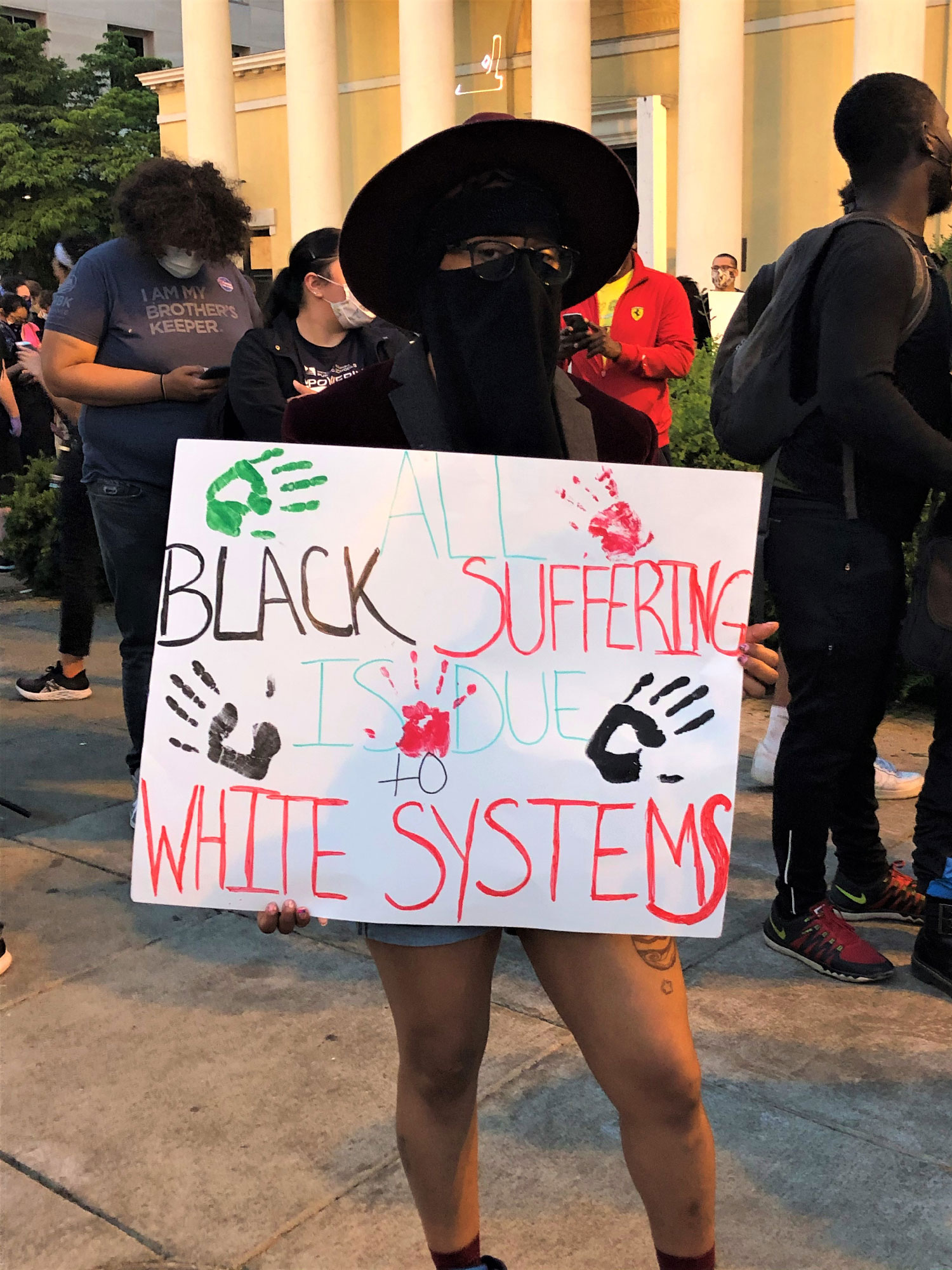
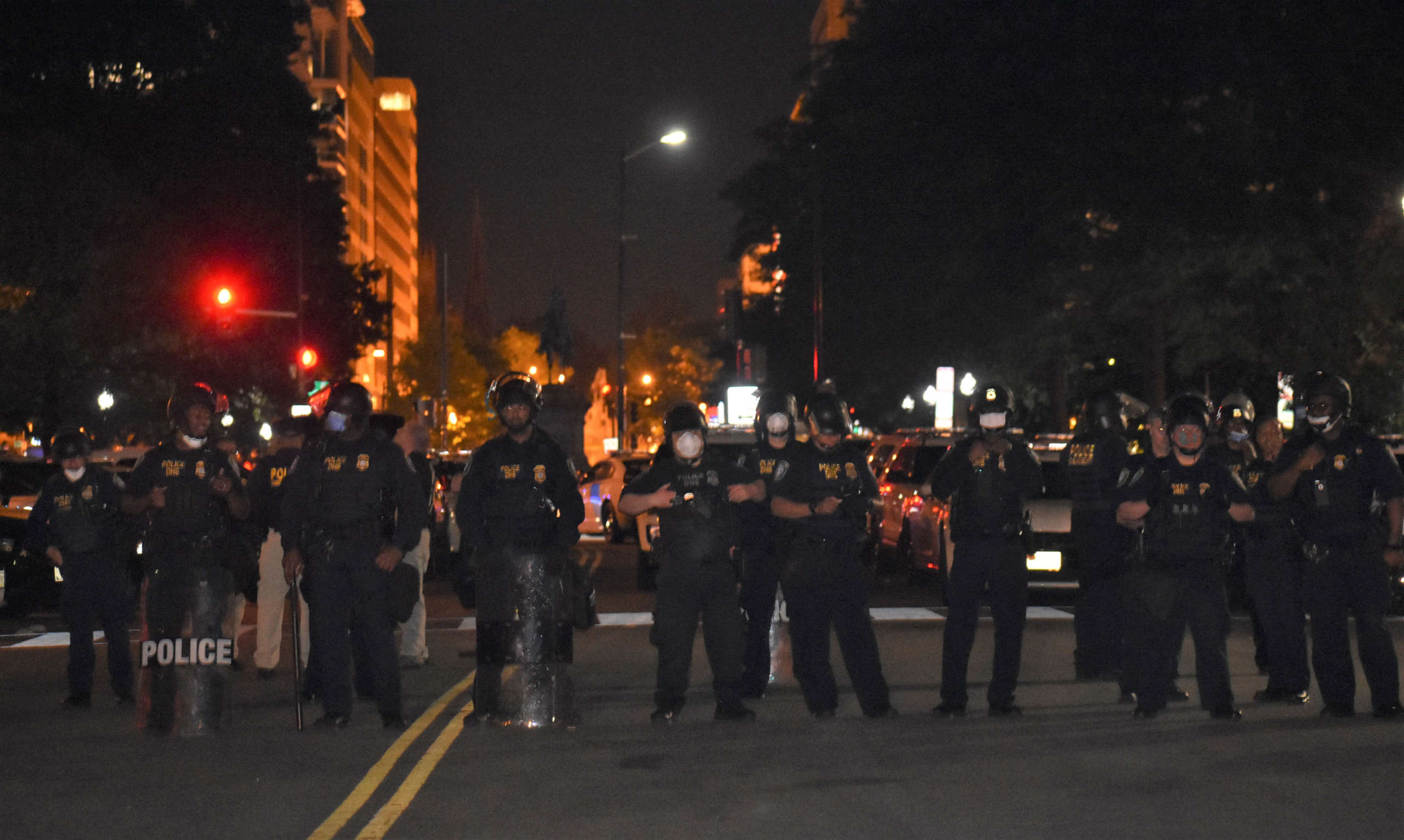
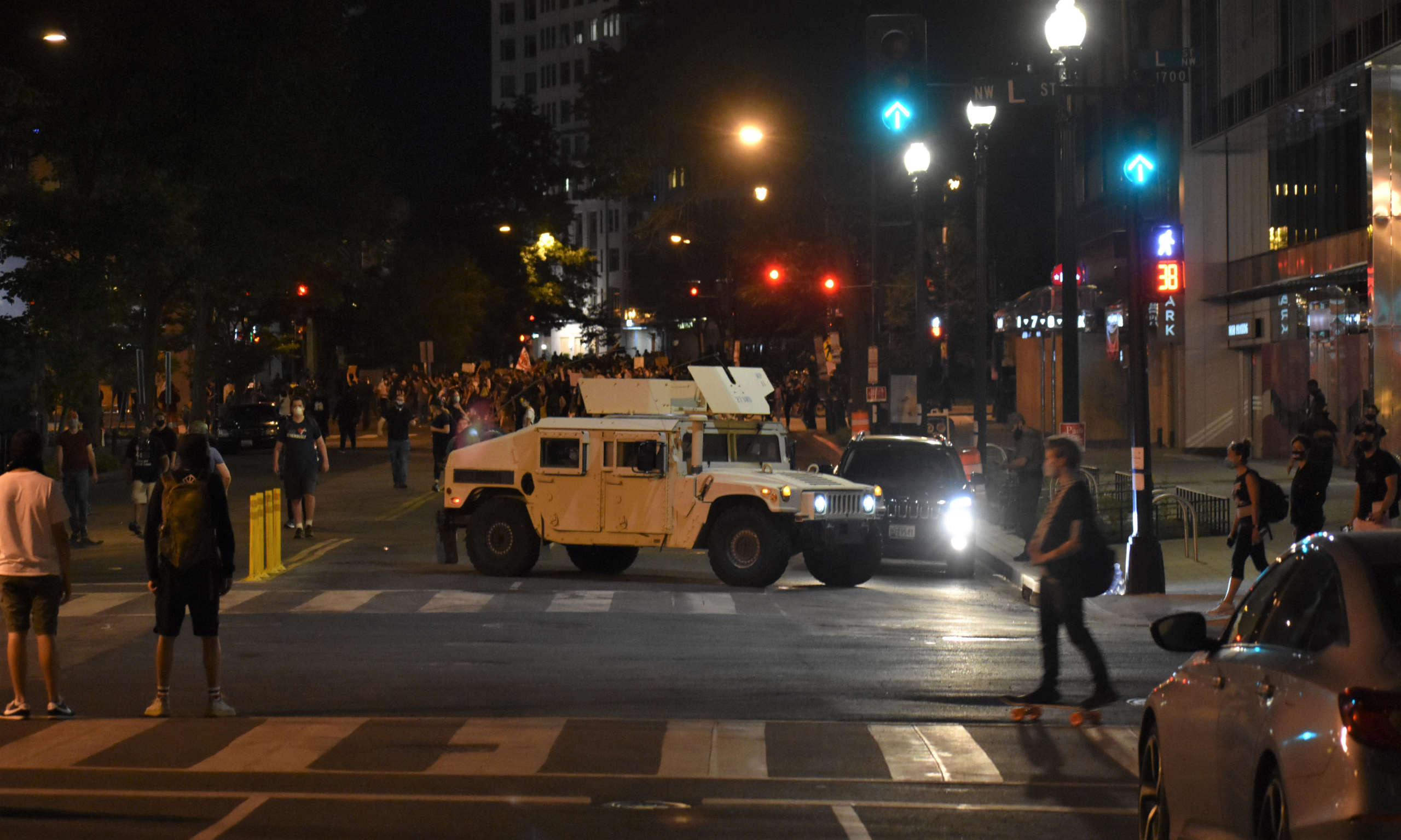
Our most important fundraising appeal of the year
December is the most critical time of year for Truthout, because our nonprofit news is funded almost entirely by individual donations from readers like you. So before you navigate away, we ask that you take just a second to support Truthout with a tax-deductible donation.
This year is a little different. We are up against a far-reaching, wide-scale attack on press freedom coming from the Trump administration. 2025 was a year of frightening censorship, news industry corporate consolidation, and worsening financial conditions for progressive nonprofits across the board.
We can only resist Trump’s agenda by cultivating a strong base of support. The right-wing mediasphere is funded comfortably by billionaire owners and venture capitalist philanthropists. At Truthout, we have you.
We’ve set an ambitious target for our year-end campaign — a goal of $250,000 to keep up our fight against authoritarianism in 2026. Please take a meaningful action in this fight: make a one-time or monthly donation to Truthout before December 31. If you have the means, please dig deep.
